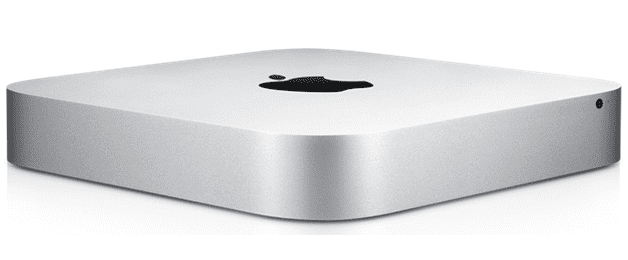The discontinuation of Apple’s SuperDrive, a staple accessory for Mac users since its launch in 2008, signals a pivotal shift in the landscape of media consumption. This decision reflects the broader trend of declining reliance on physical media, as digital downloads and streaming services continue to dominate consumer preferences. As this change unfolds, many users now face the challenge of adapting to a world increasingly devoid of optical drives. What implications does this have for the future of Apple accessories and the legacy of optical media? The answers may not be as straightforward as one might expect.
Overview of SuperDrive History
Since its introduction in 2008, the Apple USB SuperDrive has played an essential role in expanding the capabilities of Mac computers, particularly the MacBook Air, which initially lacked a built-in optical drive. This external drive was designed to provide crucial optical drive functionality, allowing users to access CDs and DVDs for data storage and media playback.
Importantly, the SuperDrive supported various disc formats, although it did not accommodate Blu-ray discs. Throughout its 16-year tenure, the SuperDrive became one of Apple’s longest-sold products, reflecting its importance in a landscape increasingly dominated by digital solutions.
As consumer technology evolved, the SuperDrive required adapters to maintain compatibility with modern USB-C ports, showcasing its adaptability in a changing market. However, the rise in digital media consumption led to a decline in demand for physical media, culminating in the SuperDrive’s discontinuation.
While it remains available in select international markets, its phase-out marks a significant shift in Apple’s strategy, highlighting the diminishing reliance on legacy optical drives. The SuperDrive’s journey encapsulates a change in consumer behavior, emphasizing the ongoing evolution of technology in the digital age.
Reasons for Discontinuation
The decision to discontinue Apple’s SuperDrive can be attributed to a marked decline in demand for physical media, as users increasingly embrace digital downloads and streaming services. This shift signifies a broader trend in consumer behavior, where reliance on external USB optical drives has diminished due to the convenience of cloud storage and instant access to content.
Since the introduction of the first MacBook Air in 2008, Apple has gradually moved away from built-in optical drives, highlighting a long-term design philosophy focused on digital solutions. The SuperDrive, while functional, became outdated with its USB-A connectivity and lack of support for Blu-ray, further diminishing its relevance in a rapidly evolving technology landscape.
The global stock depletion of Apple’s SuperDrive underscores the inevitability of its phase-out, as the tech giant aligns its product offerings with current market demands.
As consumers continue to favor digital downloads over physical media, the decision to discontinue the SuperDrive reflects both the declining demand for optical drives and Apple’s commitment to innovation in a digital-first world.
Impacts on Mac Users
Mac users are facing a significant shift in their media consumption habits following the discontinuation of Apple’s SuperDrive, a once-essential tool for accessing physical media.
With the SuperDrive now sold out globally, users who relied on this external USB device for playing CDs and DVDs or installing software will need to explore third-party alternatives. While these external optical drives can still serve the purpose, compatibility and performance may vary, creating potential challenges for users accustomed to the reliability of Apple’s SuperDrive.
The decline of physical media usage reflects a larger trend among consumers, who increasingly favor digital downloads and streaming services.
As Apple continues to pivot towards digital solutions, those who still depend on CDs and DVDs may find their access to legacy media formats increasingly restricted. This change could hinder the experience for users with extensive physical media collections, forcing them to adapt to new methods of media consumption.
Shift to Digital Media
In recent years, a marked shift towards digital media has transformed the landscape of content consumption, rendering physical media increasingly obsolete. The decline of optical drives, such as Apple’s SuperDrive, is emblematic of this change. With the rise of streaming services and digital downloads, the demand for external CD/DVD options has diminished considerably.
The table below illustrates the evolving preferences in media consumption:
| Year | Usage of Physical Media | Rise of Digital Media |
|---|---|---|
| 2010 | High | Low |
| 2015 | Moderate | Moderate |
| 2020 | Low | High |
| 2023 | Very Low | Very High |
| Future | Obsolete | Dominant |
As Apple has discontinued the SuperDrive, this decision aligns with broader industry trends, where physical media has become a niche market. The lack of updates to support USB-C adapters further indicates a waning interest in optical drives. Consumers are increasingly opting for digital solutions, demonstrating a definitive move toward cloud storage and digital formats, marking a considerable milestone in technological evolution.
Alternatives to SuperDrive
As the reliance on physical media continues to wane, users seeking alternatives to Apple’s discontinued SuperDrive have a range of options available. Numerous external optical drives from third-party manufacturers provide similar functionalities, often at competitive prices.
These USB-powered optical drives are particularly appealing due to their compatibility with both Windows and macOS, catering to a diverse user base. Brands like LG stand out in the optical drive market, offering reliable products such as the LG WH16NS40, which is known for supporting M-Disc technology, ideal for long-term data preservation.
While most USB optical drives function well with Mac computers, prospective buyers should be aware of potential compatibility issues with certain software, including iTunes. Consequently, consulting user reviews before making a purchase is advisable to avoid any inconvenience.
Despite the growing trend toward digital downloads and cloud storage, the availability of these alternatives to SuperDrive guarantees that users still have access to physical media when needed.
Ultimately, users can find suitable external optical drives that align with their specific needs, ensuring flexibility in their media consumption habits.
Legacy of Optical Drives
The legacy of optical drives is marked by a complex interplay of nostalgia and practicality, reflecting their once-central role in personal computing. For many users, the experience of inserting a CD or DVD into a drive evokes fond memories of software installations and movie nights.
The Apple SuperDrive, introduced in 2008, epitomized this connection, providing Mac users with an external option as built-in optical drives were phased out. This shift highlighted changing consumer preferences towards digital media, rendering physical media increasingly obsolete.
By 2013, Apple had eliminated optical drives from all its Macs, signaling a definitive change to a digital-first approach. While streaming services and digital downloads dominate the landscape, the discontinuation of the SuperDrive does not erase the utility optical drives once provided.
Despite their decline, third-party external drives remain available, catering to a niche market still reliant on CDs and DVDs for specific tasks.
Ultimately, the legacy of optical drives encompasses both a sense of loss for their tangible presence and a recognition of the practicality offered by digital media, marking a significant evolution in how we access and consume content.
Future of Apple Accessories
With the retirement of the SuperDrive, Apple is poised to rethink its accessory offerings in light of evolving consumer preferences. The discontinuation reflects a significant shift towards digital media consumption and a decline in the use of physical media. Future accessories will likely prioritize USB-C compatibility, enhancing the user experience for MacBook owners.
Apple’s focus will shift towards solutions that support digital content management and cloud storage, responding to the increasing demand for data accessibility and storage efficiency. The rise of streaming services and digital downloads necessitates a departure from traditional optical drives.
The table below summarizes potential future accessory trends:
| Accessory Type | Description | Target Audience |
|---|---|---|
| External SSDs | High-speed storage for data-intensive tasks | Creative professionals |
| USB-C Hubs | Expand connectivity options for MacBooks | General users |
| Cloud Storage Adapters | Facilitate seamless integration with cloud services | Tech-savvy consumers |
| Digital Media Players | Stream and manage digital content efficiently | Home entertainment users |
| Wireless Backup Solutions | Automated cloud backups for data security | Small business owners |
These innovations will cater to a new generation of users, ensuring Apple remains at the forefront of technology.
MacReview Verdict
The discontinuation of Apple’s SuperDrive signifies the end of an era reminiscent of the change from VHS to DVD, reflecting the broader shift from physical media to digital consumption. As cloud storage and streaming services dominate, the reliance on optical drives has waned, necessitating a reevaluation of media access methods. This evolution not only impacts current Mac users but also illustrates the ongoing transformation within technology and consumer habits, underscoring the legacy of optical drives in the digital age.




